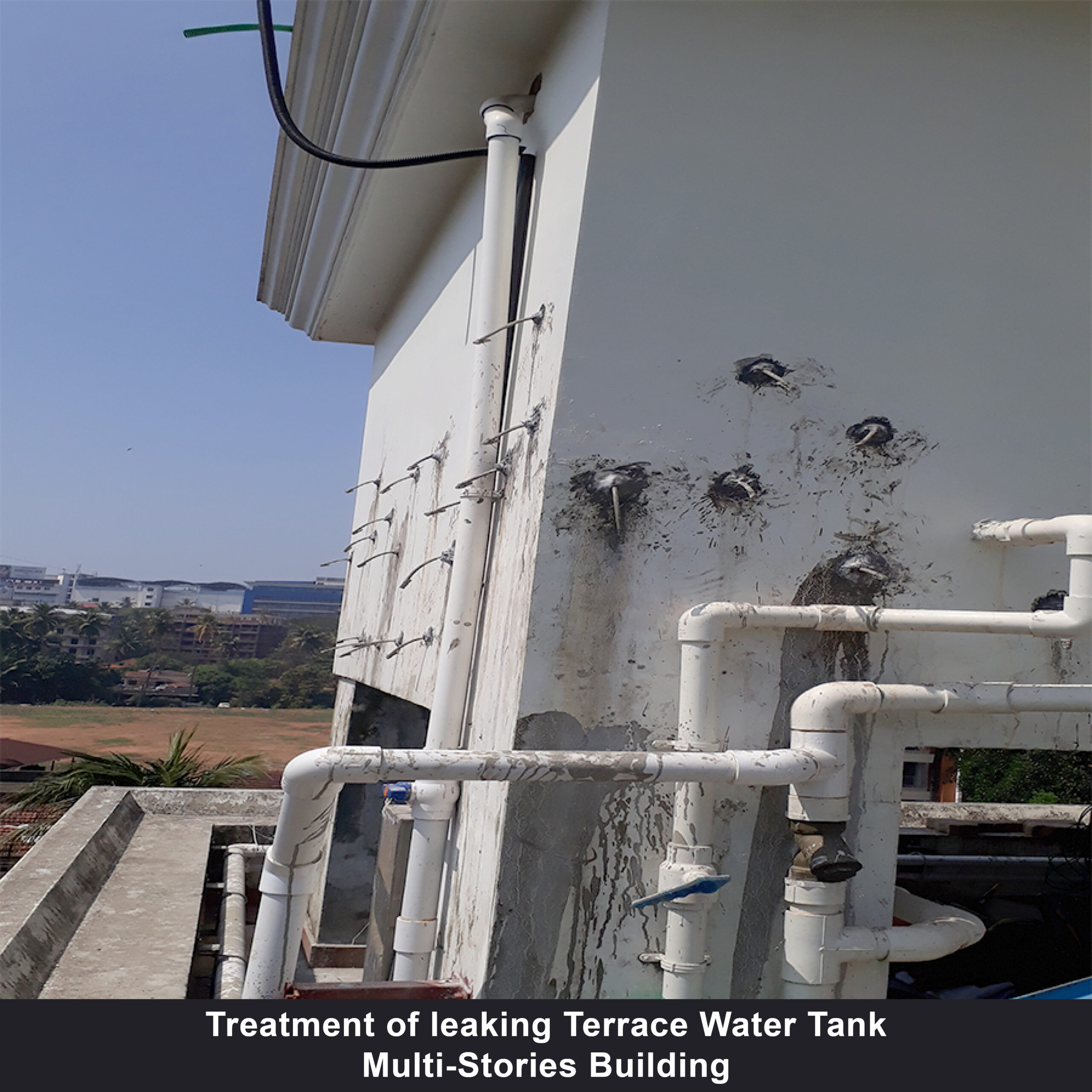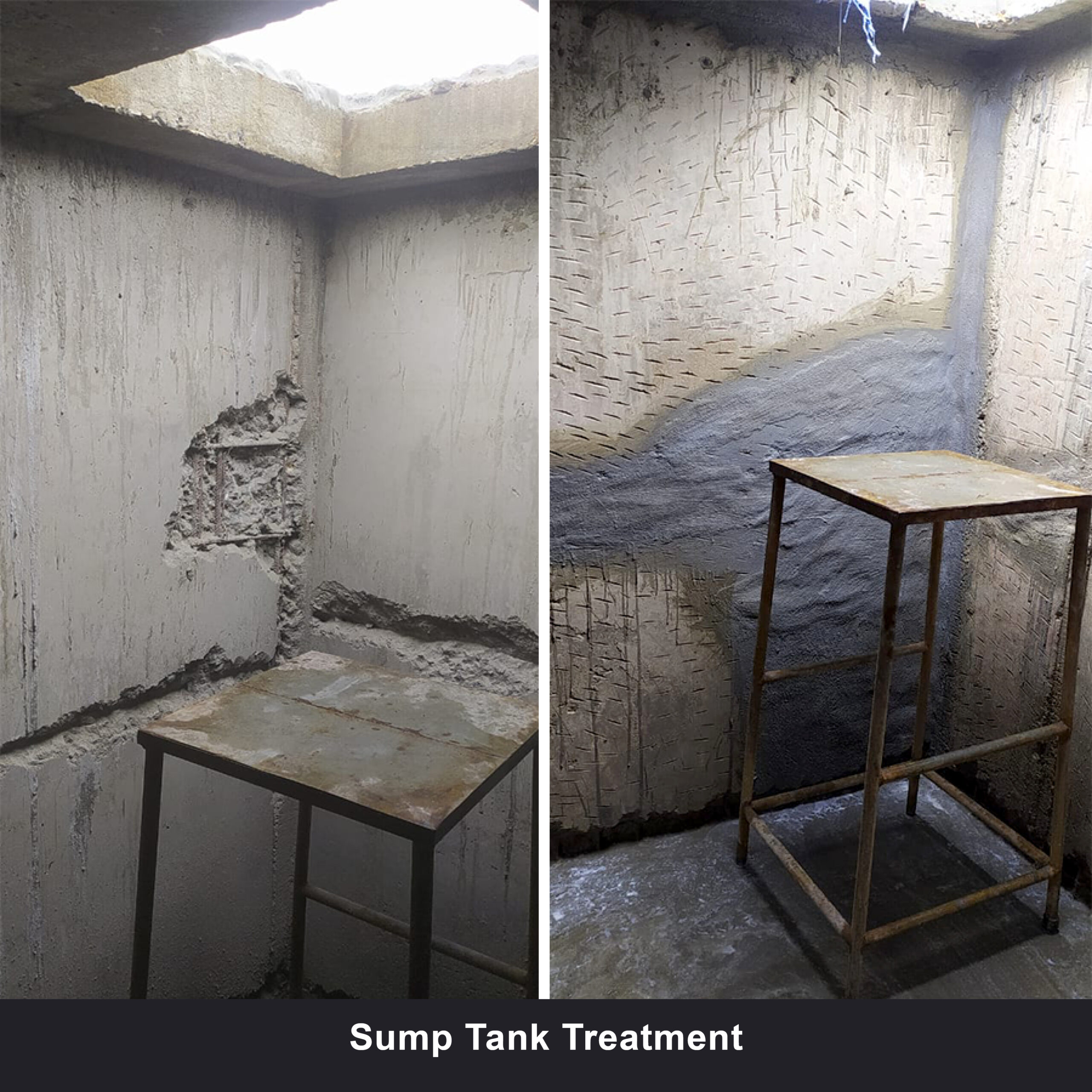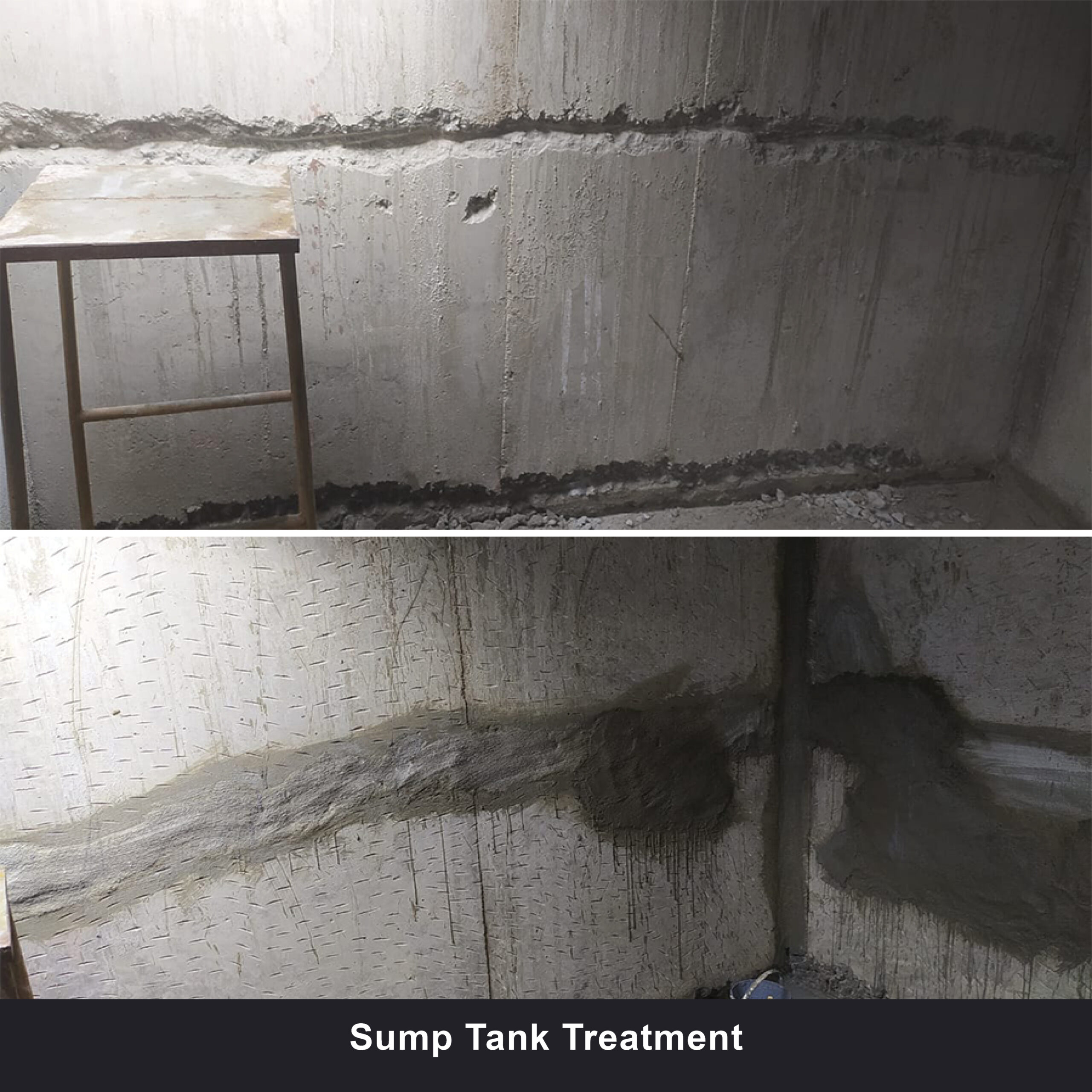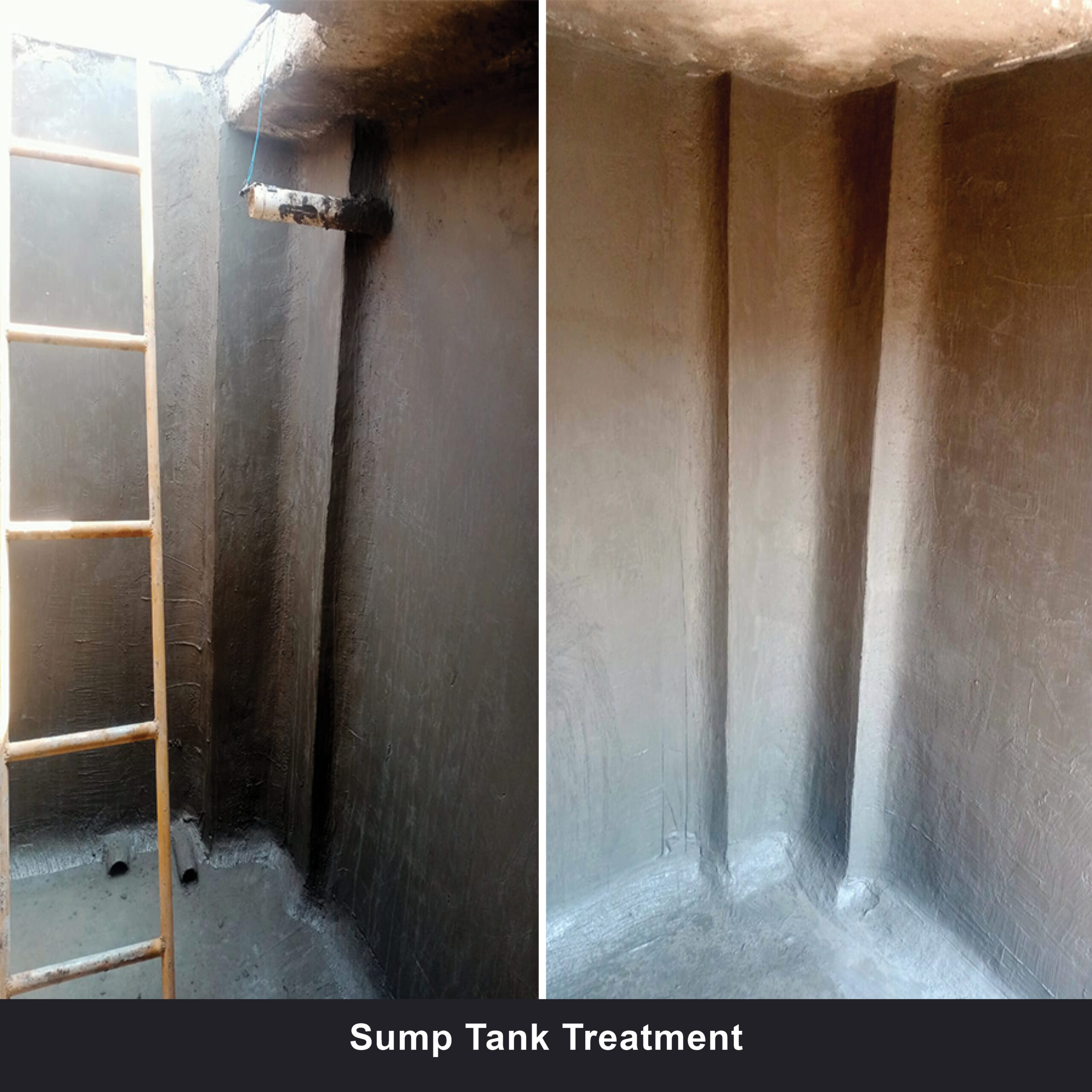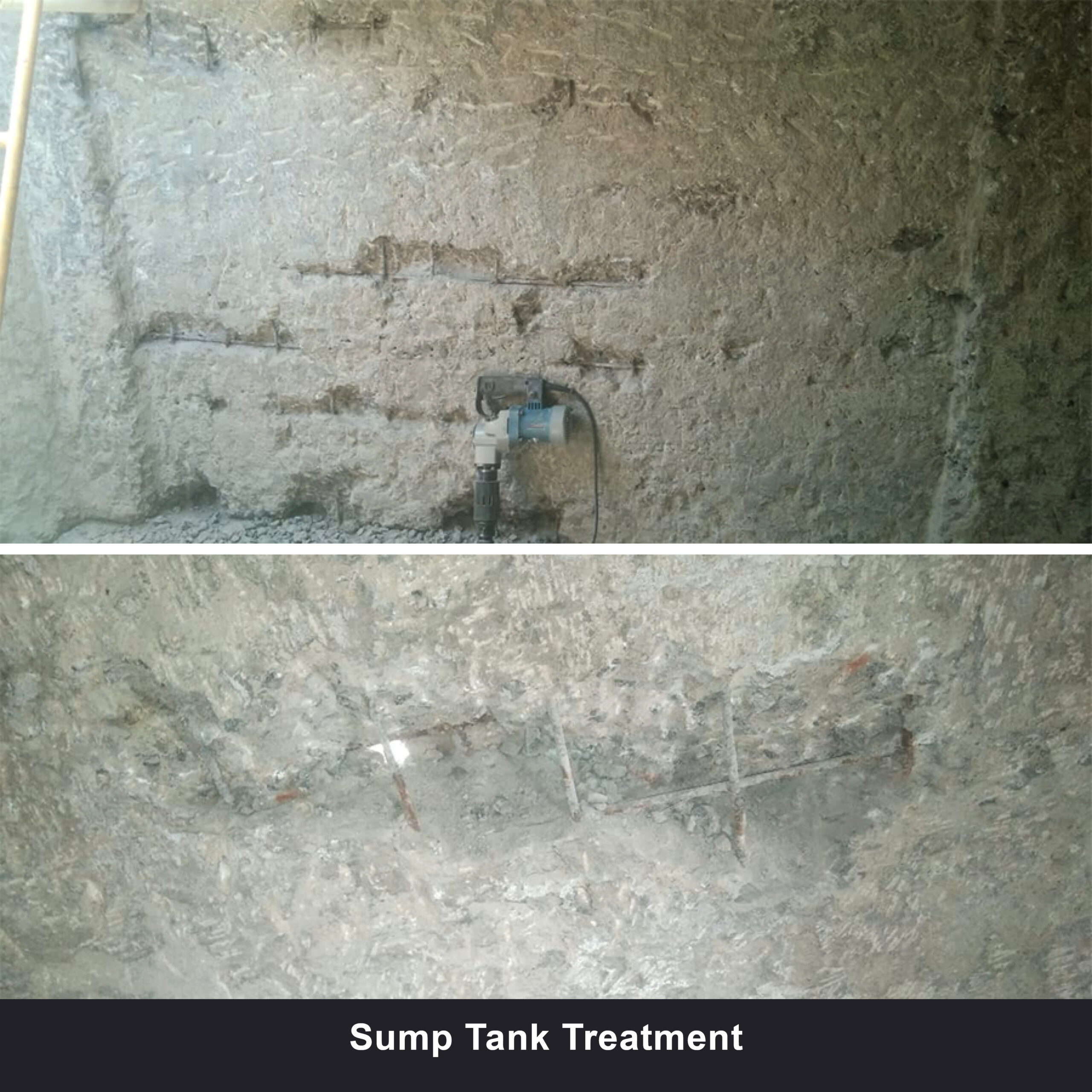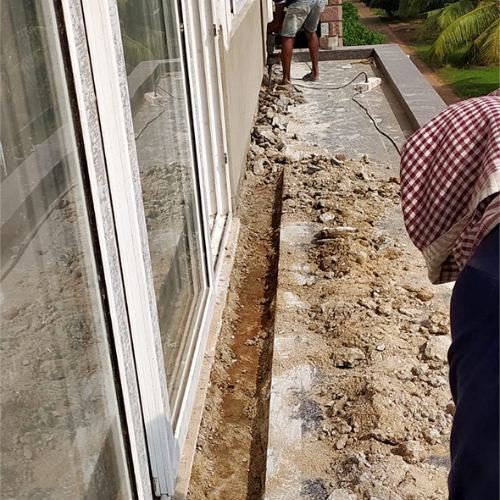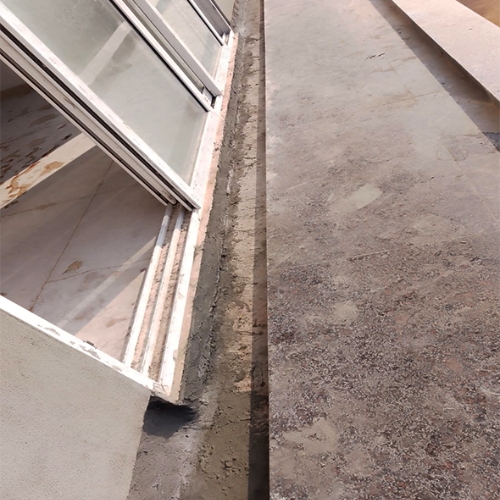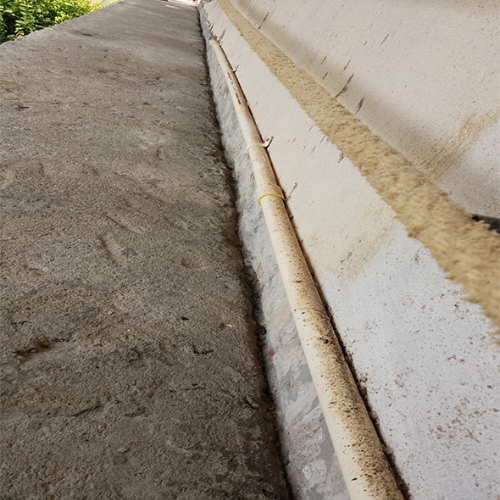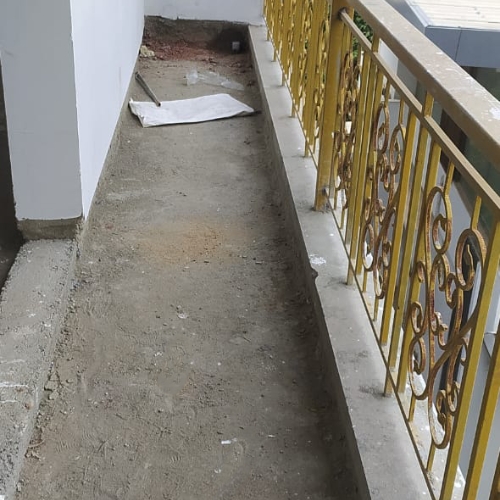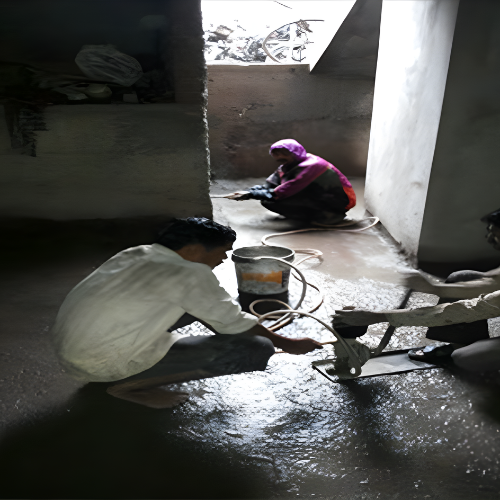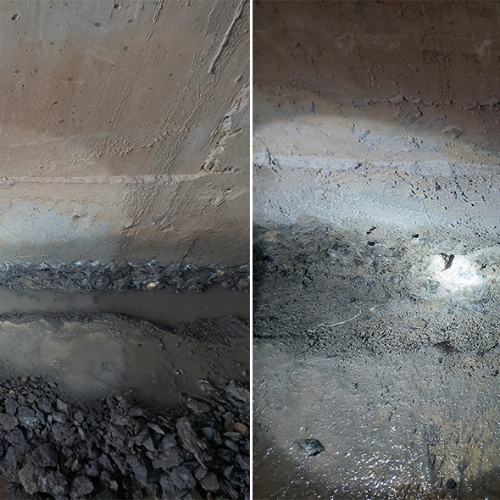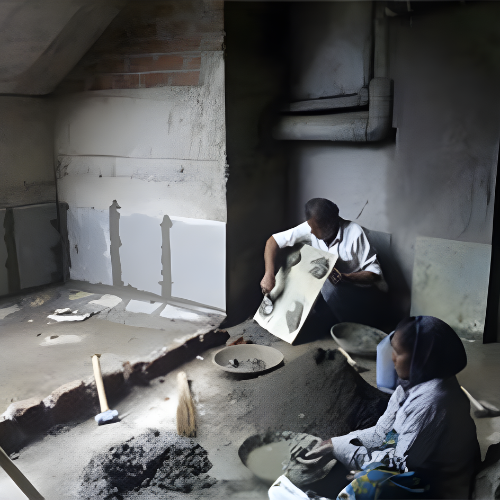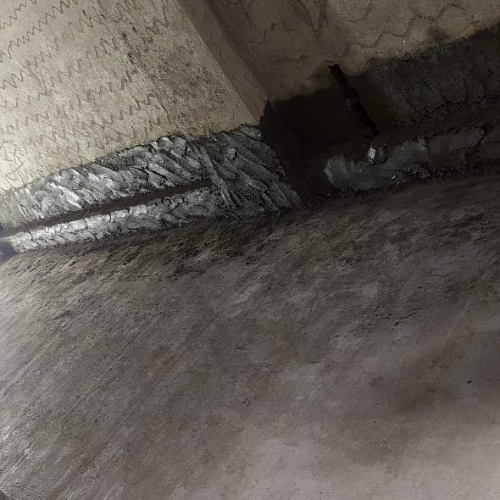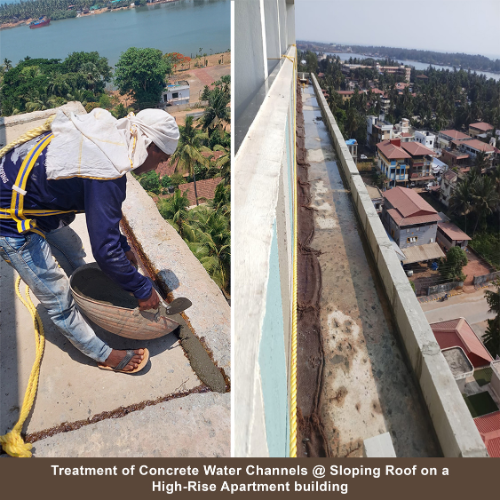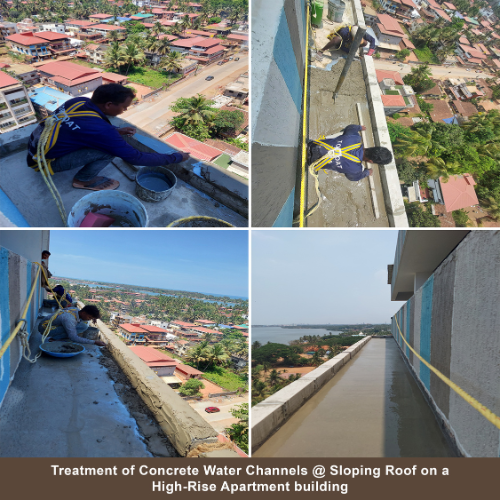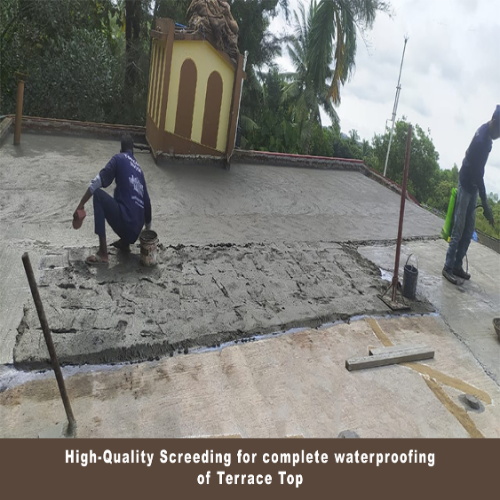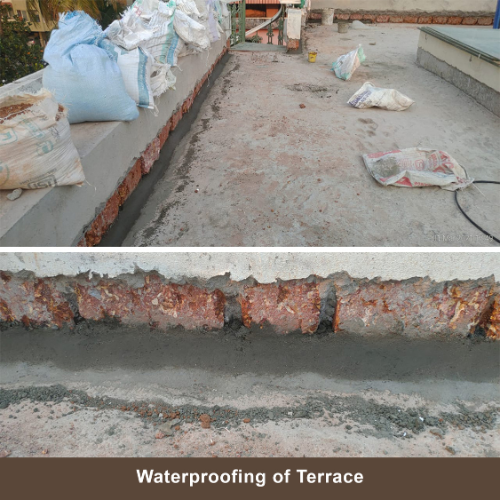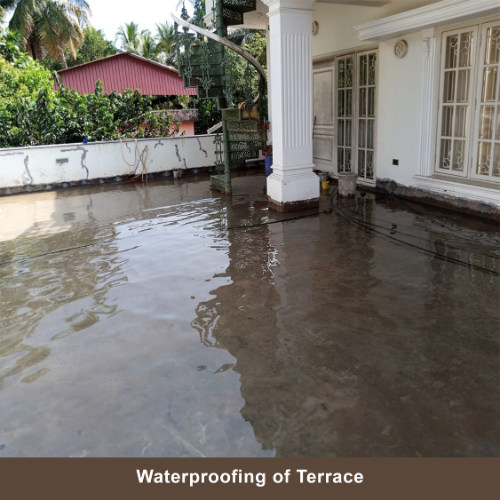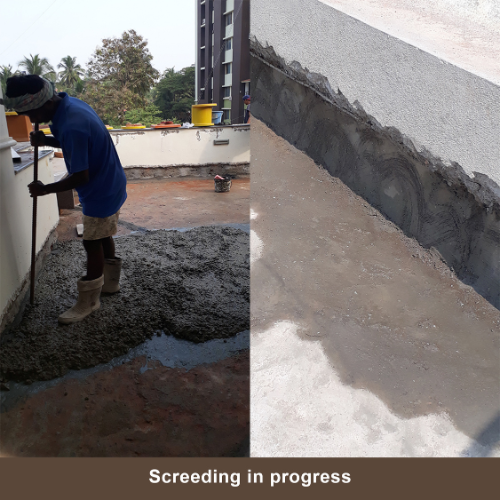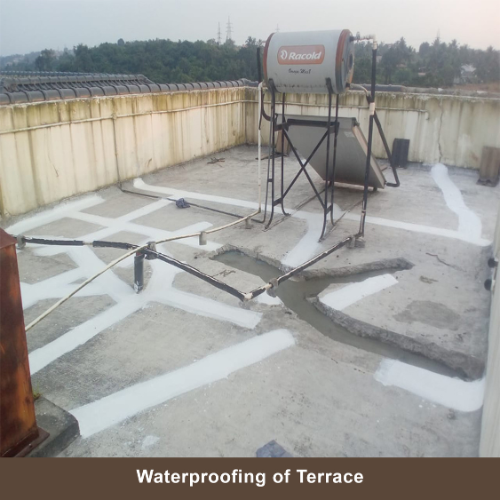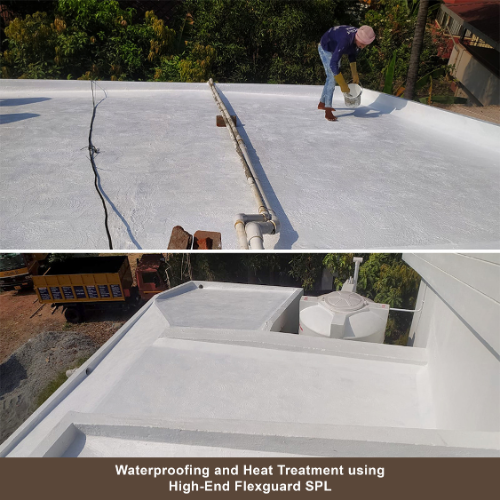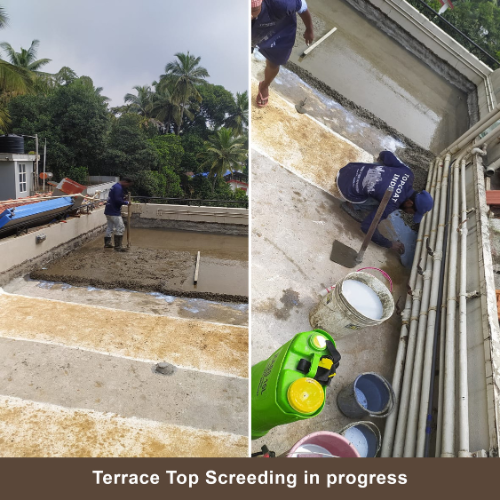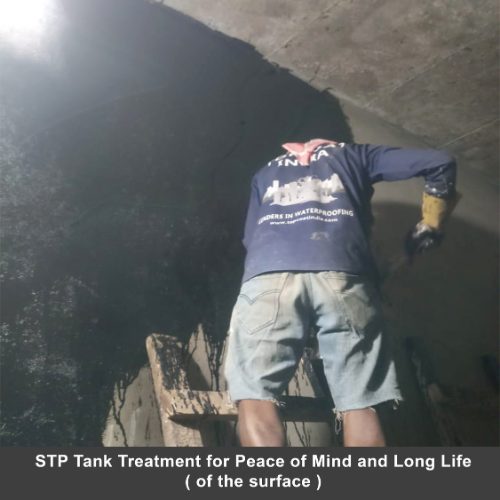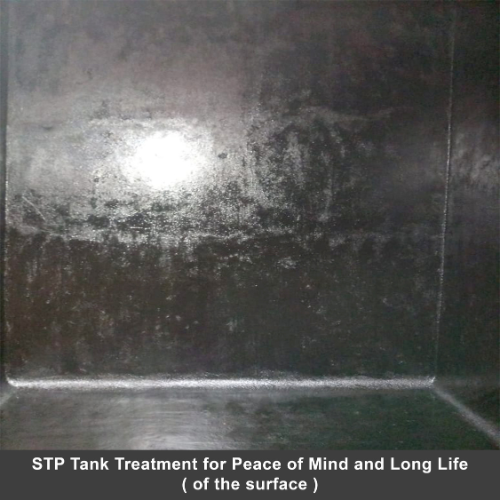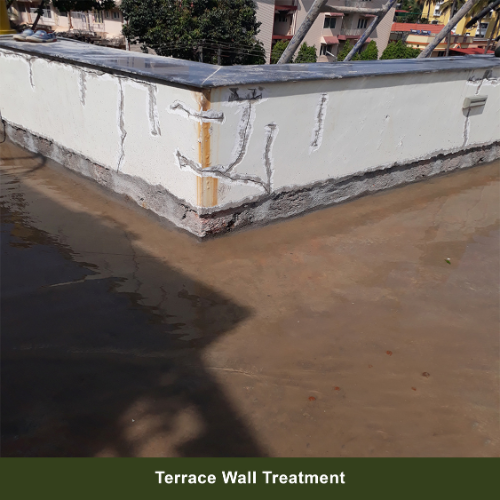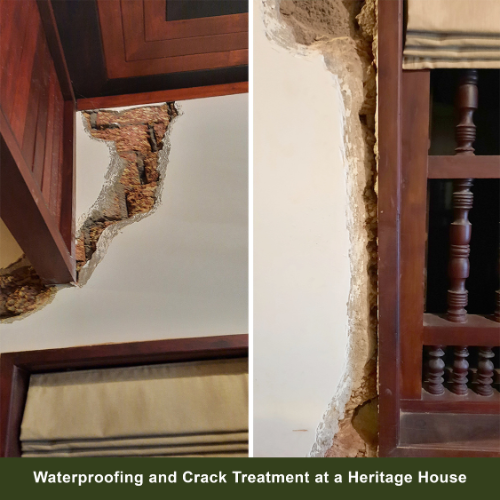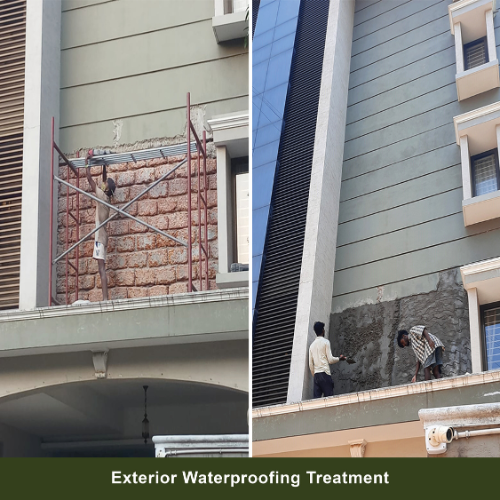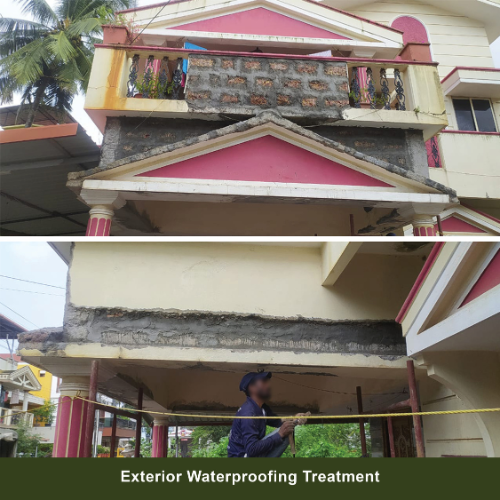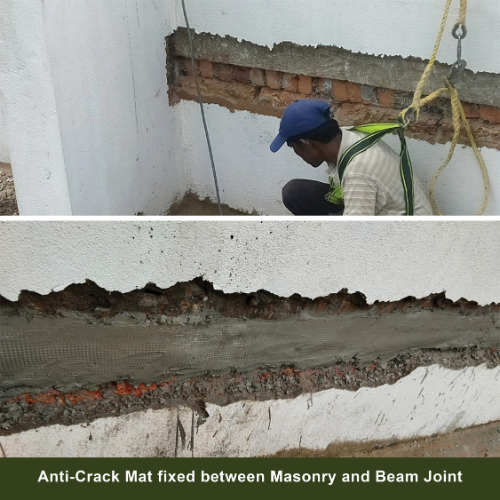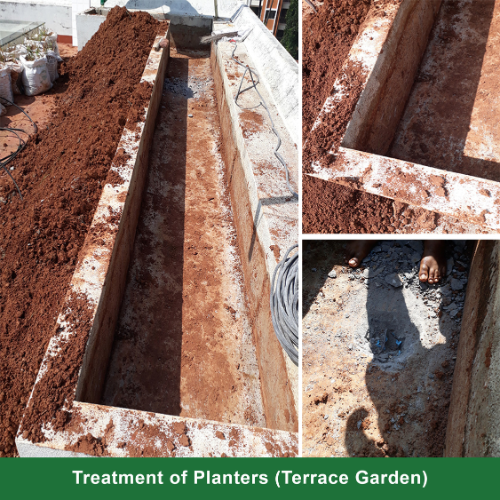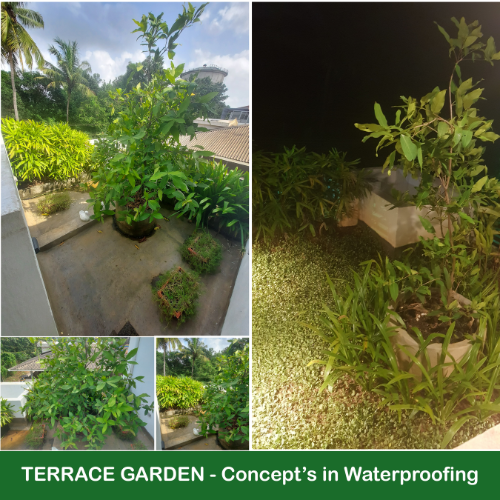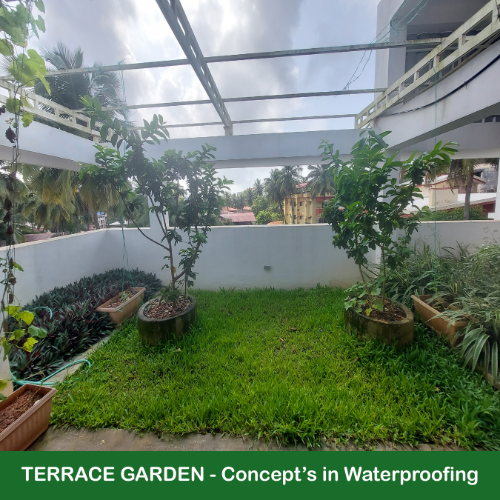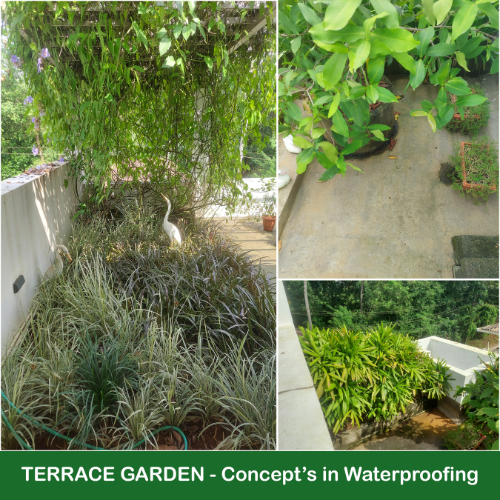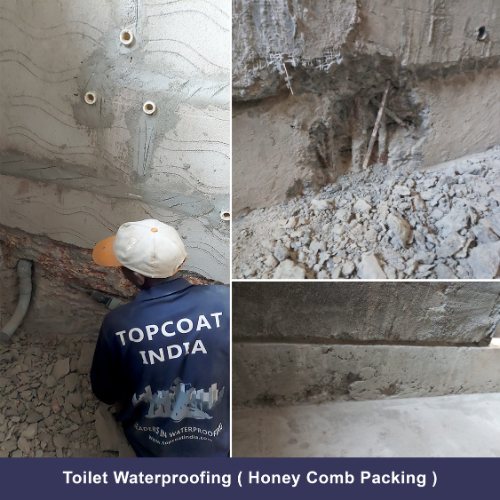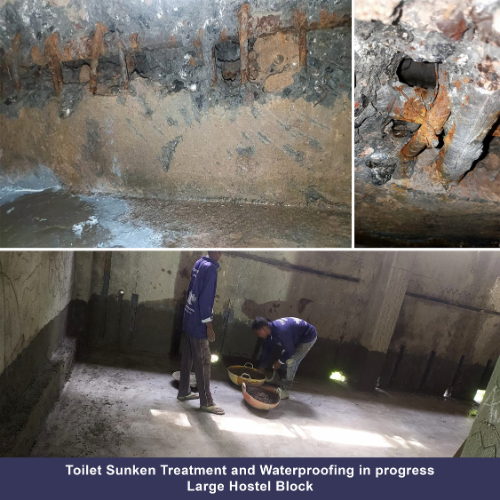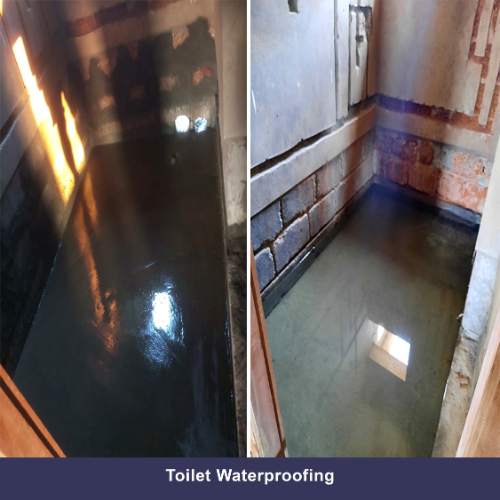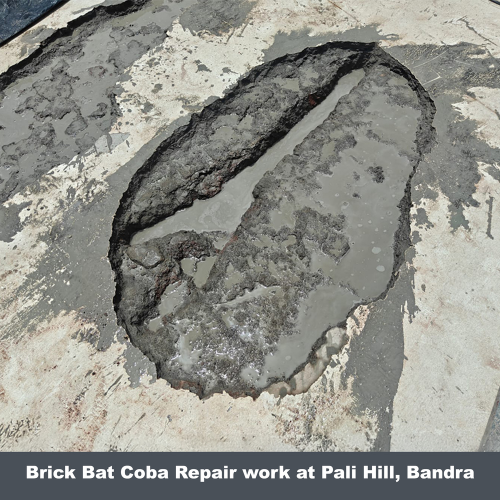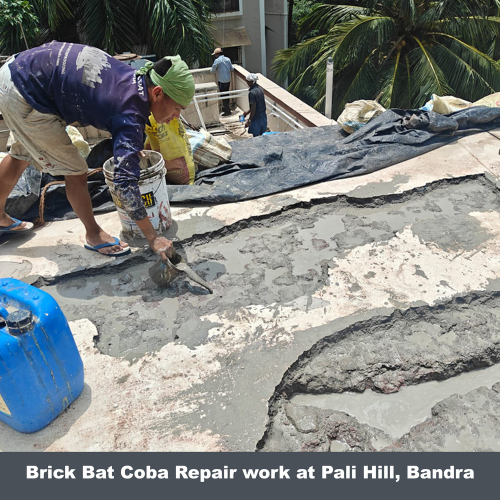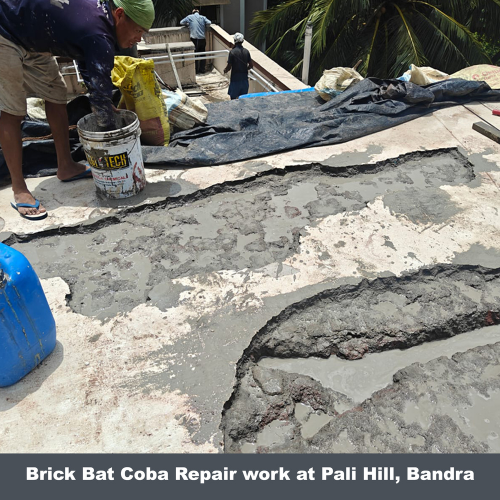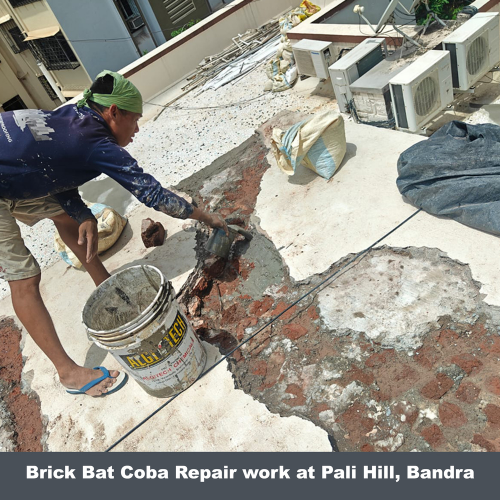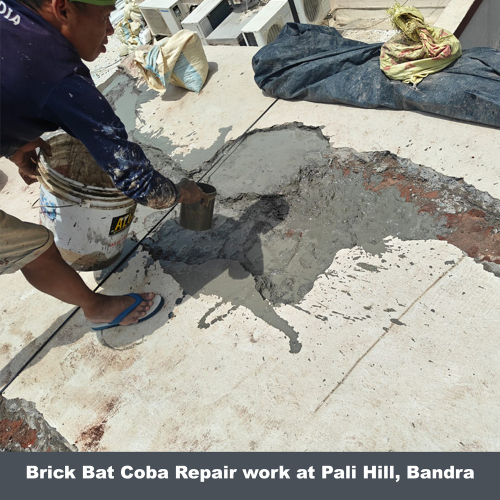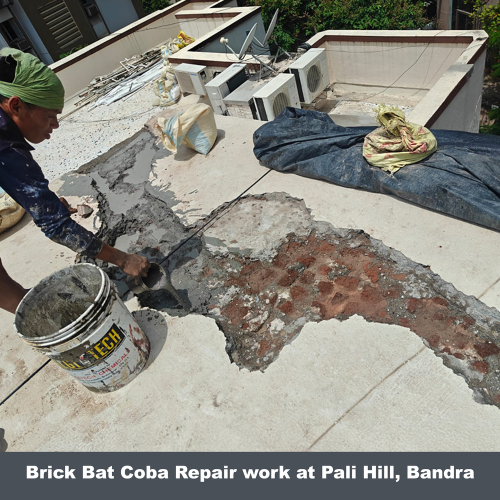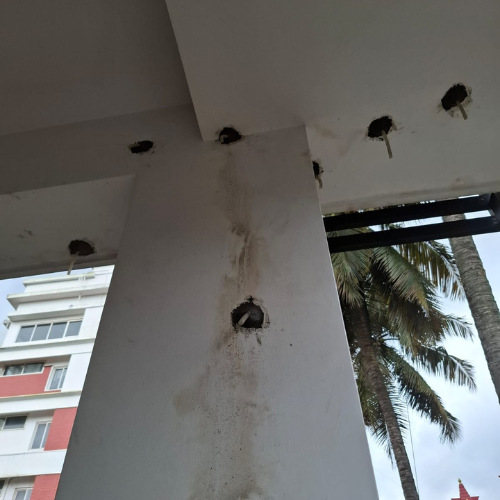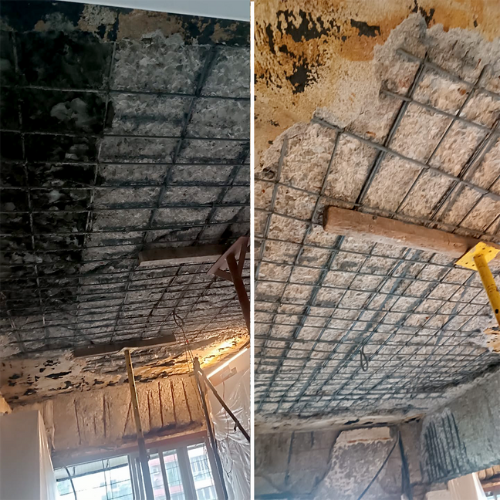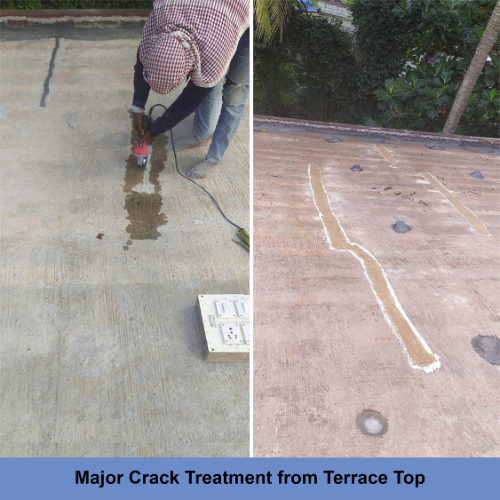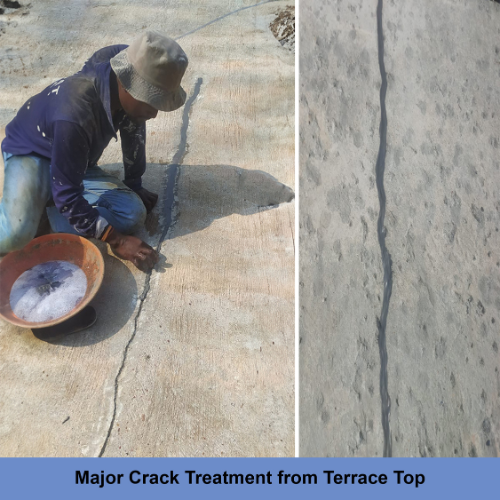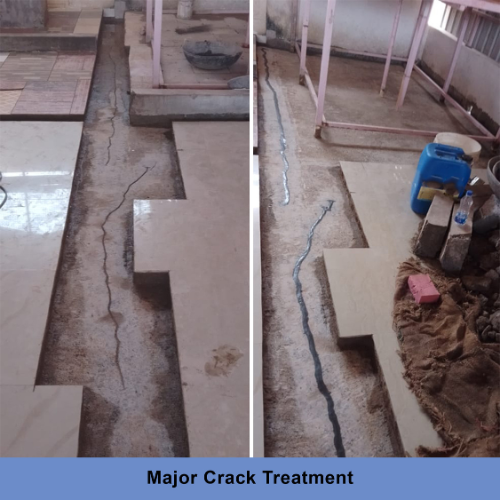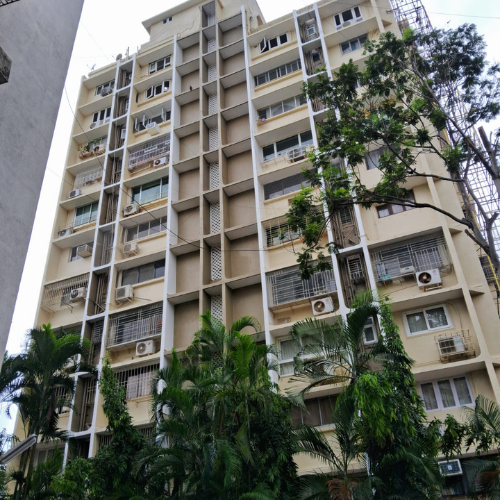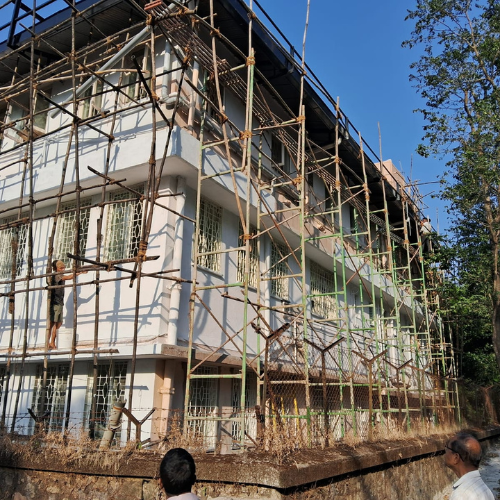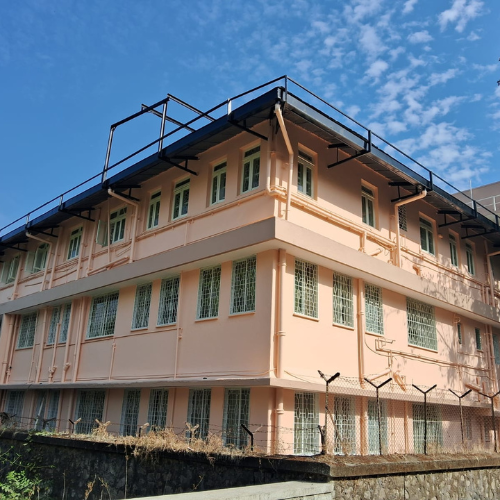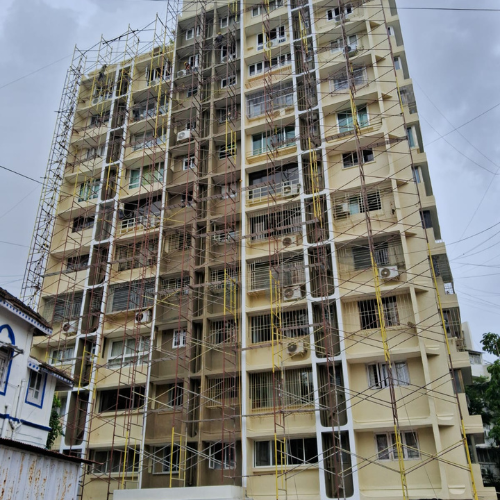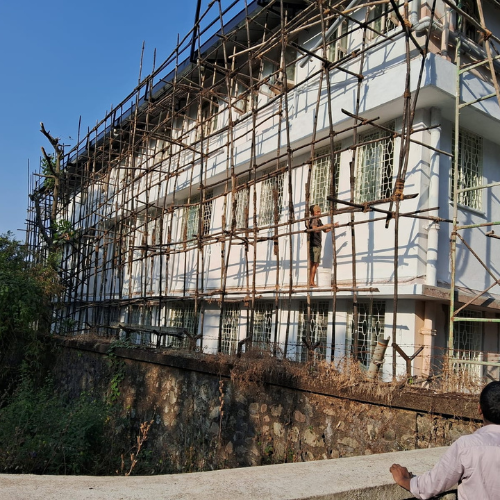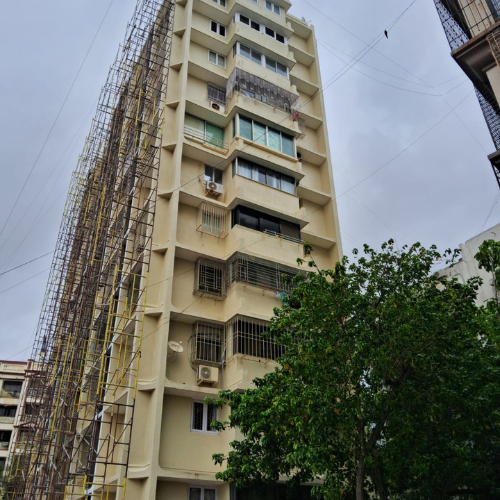Our Services
Waterproofing Solutions
Waterproofing is an essential aspect of construction and building maintenance, ensuring protection against water ingress, seepage, and moisture-related damage. From terraces, basements, and toilets to water tanks, STP tanks, and vertical walls, effective waterproofing safeguards the structural integrity of a building while enhancing its durability and lifespan.
By creating reliable barriers against water infiltration, waterproofing solutions prevent issues such as cracks, dampness, mold growth, and corrosion, while also reducing long-term repair costs. With the right materials and expertise, waterproofing not only preserves the strength of the structure but also provides safety, comfort, and peace of mind for years to come.
Water Tank Waterproofing
- At Topcoat India, we specialize in advanced water tank waterproofing solutions designed to prevent leakage, seepage, and structural damage in both overhead and underground storage tanks.
- Our expert waterproofing systems ensure long-lasting protection, maintaining the integrity of tanks used for drinking water, industrial liquids, and other critical applications.
- By choosing Topcoat India’s reliable waterproofing methods, you safeguard your water storage against contamination and extend the lifespan of your structure with proven, high-quality solutions.
Balcony Waterproofing
- Crucial step in protecting the structural integrity of your building and ensuring long-lasting performance
- At Topcoat India, we provide advanced balcony waterproofing solutions that shield your balcony from water ingress, leaks, and seepage.
- Enhances durability and keeps balconies safe and strong.
- We at Topcoat India deliver reliable and long lasting balcony leak protection systems that reduce costly repairs and maintain a strong, weather-resistant finish for years to come.
Basement Waterproofing
- A critical process designed to prevent water from seeping into a building’s foundation, especially in the basement area.
- Protecting your foundation, retaining and basement wall against dampness, mold, and long-term structural damage by preventing water ingress.
- We at Topcoat India, ensure a dry, safe, and usable basement space.
- Extends the lifespan and stability of the entire building.
At Topcoat India we deliver dependable and proven waterproofing solutions thus reducing long term unnecessary maintenance costs.
Terrace Rooftop Waterproofing
- Critical process that aims at preventing water seepage and protects your roof from rain and weather damage.
- At Topcoat India, we provide advanced waterproofing solutions that create a durable protective barrier against rain and harsh weather elements.
- Our systems help preserve the structural integrity of the building, reduce the risk of dampness and leaks, and promote a healthier indoor environment.
- We make use of only certified high-quality and durable materials for long-lasting protection.
- With Topcoat India’s proven expertise, you not only safeguard your structure but also extend its lifespan while minimizing future repair and maintenance cost
STP Tank Waterproofing
- Crucial process aimed at preventing water leakage and seepage in STP Tanks.
- Ensure the integrity, longevity and peace of mind of the surface and structure.
- We at Topcoat India, create a barrier to prevent water infiltration and leakage.
- Protective measures of waterproofing are taken particularly for STP Tanks to maintain the tank’s structural integrity and prevent environmental contamination.
At Topcoat India, we deliver long-lasting hassle free and durable STP Tank Waterproofing.
Vertical Wall Waterproofing
- Specialized treatment that protects exterior walls and other vertical surfaces from water infiltration and damage.
- We at Topcoat India, ensure prevention of future dampness, cracks, and surface deterioration.
- Maintains the structural strength and durability of the building.
- Enhances appearance and prevents mold or fungal growth.
- At Topcoat India, we deliver long-lasting hassle free wall protection solutions.
Terrace Garden Waterproofing
- Specialized process designed to protect the building’s structural integrity while creating a durable, water-resistant barrier beneath the garden.
- We at Topcoat India, ensure long-lasting protection of your roof slab against rainwater, irrigation water, and the effects of weathering
- Preventing leakage, seepage, and long-term structural damage.
- Ensuring the health of your terrace garden and the safety of the building.
- At Topcoat India we deliver durable, reliable and hassle free waterproofing systems so your gardens and the structure beneath can thrive.
Toilet Waterproofing
- Essential process that uses specialized materials to form a protective barrier against water leakage and seepage in bathrooms and wet areas.
- At Topcoat India we ensure a clean, durable, and hygienic bathroom environment by effectively sealing these spaces, so as to prevent water damage, mold growth, and long-term structural deterioration.
- Protects the overall integrity and longevity of your building.
We at Topcoat India, provide reliable, long-lasting waterproofing solutions.
Water Tank Waterproofing
- At Topcoat India, we specialize in advanced water tank waterproofing solutions designed to prevent leakage, seepage, and structural damage in both overhead and underground storage tanks.
- Our expert waterproofing systems ensure long-lasting protection, maintaining the integrity of tanks used for drinking water, industrial liquids, and other critical applications.
- By choosing Topcoat India’s reliable waterproofing methods, you safeguard your water storage against contamination and extend the lifespan of your structure with proven, high-quality solutions.
Structural Services
Brick Bat Coba Repair
- Specialized maintenance process designed to restore the waterproofing efficiency of flat concrete roofs that use the traditional Brick Bat Coba system.
- Restore the waterproofing of old or damaged Brick Bat Coba roofs.
- Fix cracks, slope issues, and water seepage caused by weather or wear.
- We at Topcoat India, provide strong waterproofing and proper drainage without full replacement cost.
- Topcoat India offers durable, cost-effective roof repair solutions.
Pressure Grouting
- Specialized process used to strengthen and repair concrete or masonry structures by filling cracks, voids, and honeycombs.
- At Topcoat India we use controlled pressure grout injection to seal hidden gaps and restore integrity.
- Enhancing structural strength and preventing expensive future repairs.
- Improving load-bearing capacity and extending service life of old structures.
We at Topcoat India provide efficient, non-disruptive and tested rehabilitation solutions.
Structural Rehabilitation
- Vital process for restoring and extending the life of buildings.
- At Topcoat India we address critical damage and enhance performance, structural rehabilitation.
- Restores stability but also significantly extends the overall lifespan of a building.
We at Topcoat India provide efficient, reliable, hassle and tension free rehabilitation solutions.
Expansion Joint Treatment
- Highly specialized process designed to accommodate the natural expansion and contraction movements of structures caused by temperature fluctuations and other environmental factors.
- Preventing cracks and water seepage.
- Maintaining the overall structural integrity during expansion and contraction.
- Enhancing durability and performance.
- We at Topcoat India, ensure long-term safety and stability of buildings and infrastructure
- At Topcoat India, we work with certified and tested materials with years of expertise in the field not only to safeguard against potential damage but also significantly extend the life span of the structure.
External Building Repair
- Specialized service focused on restoring, protecting, and enhancing the outer structure of buildings exposed to weather, moisture, and aging.
- Prevents water leakage, dampness, and corrosion of reinforcement steel.
- At Topcoat India,we help in extending lifespan while reducing long-term maintenance costs.
- Enhances building strength, durability, and appearance.
We at Topcoat India, provide efficient, reliable, hassle and tension free external building repair services.
Frequently Asked Questions (FAQs)
Why is waterproofing important for buildings?
Waterproofing prevents water seepage and moisture-related damage, protecting the structure from cracks, leaks, mold growth, and long-term deterioration. It also extends the life of the building and reduces costly repairs.
Why is waterproofing important for buildings?
Waterproofing prevents water seepage and moisture-related damage, protecting the structure from cracks, leaks, mold growth, and long-term deterioration. It also extends the life of the building and reduces costly repairs.
Which areas of a building require waterproofing the most?
Common areas include terraces, basements, toilets, vertical walls, water tanks, and STP tanks—anywhere prone to water exposure or seepage.
How long does waterproofing last?
The lifespan of waterproofing depends on the quality of materials, application method, and environmental conditions. With proper execution, waterproofing can last anywhere between 7 to 15 years before requiring maintenance.
What methods are used for waterproofing?
Different methods are used depending on the area and requirement, including liquid-applied membranes, bituminous coatings, cementitious coatings, polyurethane systems, and advanced chemical treatments.
Can waterproofing be done on existing buildings?
Yes. Waterproofing solutions can be applied to both new constructions and existing buildings to repair leaks, strengthen structures, and provide long-term protection.
How do I know if my building needs waterproofing?
Signs include damp walls, peeling paint, mold or mildew growth, water stains, and leakage during rains. If you notice these issues, it’s time to consider waterproofing solutions.

